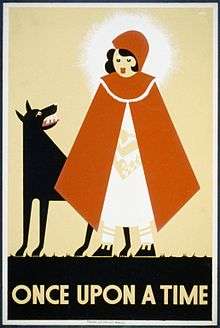Talking animals in fiction

Talking animals are a common theme in mythology and folk tales, as well as children's literature. Fictional talking animals often are anthropomorphic, possessing human-like qualities but appearing as a creature. The usage of talking animals enable storytellers to combine the basic characteristics of the animal with human behavior, to apply metaphor, and to entertain children.
There are a number of alleged real-life talking animals.
Talking creatures which are still creatures
The creature retains its original form without much change, other than being able to speak. Sometimes it may only speak as a narration for the reader's convenience. The rabbits in Watership Down who, except for the ability to discuss their actions, behave exactly as normal rabbits, also come under this category, as do characters from animated films like Happy Feet and The Lion King.

The talking creature concept is featured within much traditional literature, such as in Aesop's Fables, and several mythologies, including Greek, Chinese and Indian mythologies. A notable example from the Judaeo-Christian tradition is the talking serpent from the Book of Genesis, which tempts Eve to eat the forbidden fruit of the Tree of the Knowledge of Good and Evil.
Many fairy tales include apparent talking creatures that prove to be shapeshifted people, or even ghosts. The fairy tales How Ian Direach got the Blue Falcon and Tsarevitch Ivan, the Fire Bird and the Gray Wolf have the hero aided by a fox and a wolf respectively, but in the similar tale The Golden Bird, the talking fox is freed from a spell to become the heroine's brother, and in The Bird 'Grip', the fox leaves the hero after explaining that it was the dead man whose debts the hero had paid.
Whether shape-shifted or merely having the magical ability to speak, the talking creature is perhaps the most common trait of fairy tales. The motif is certainly present in many more tales than fairies.[1]
Numerous modern science fiction and fantasy stories intermix human and creature characters. In L. Frank Baum's Land of Oz, creatures (such as the Cowardly Lion and the Hungry Tiger) talk. The chicken Billina gains the ability to talk when she is swept away by a storm to land near Oz, as do other animals, and Toto, it is explained in a retcon, always had the ability since arriving in Oz, but never used it. In C. S. Lewis's Chronicles of Narnia, the world of Narnia is ruled by a talking lion by the name of Aslan, and many small characters are talking woodland animals, both of which interact with both the humans of Narnia, and the children who act as the protagonists of the books.
Creatures that portray humans
Most people in the industries of professional illustration, cartooning, and animation refer to these types of creature characters as talking animals,[2] funny animals or anthropomorphic characters.[3] However, the mainstream news media and members of furry fandom more commonly refer to this variety of talking animals as furries. The earliest example of talking creatures portraying humans, as opposed to talking creatures portraying creatures, was in Vishnu Sarma's Panchatantra (Fables of Bidpai), which was set in a world of talking creatures who represent human morals and behavior. A good Western example of the genre is Henryson's Fabillis. The webcomic "Anima: Age of the Robots" (Anima (webcomic)) uses anthropomorphism to portray an alternate world as modern as ours, but inhabited by creature-lookalikes. The intelligent robots they have made rebel and threaten the creatures. This serves as a warning to mankind's thoughtless pursuit of technological advancement.
See also
- Anthropomorphism
- Category:Video games featuring anthropomorphic characters
- Uplift (science fiction)
References
- ↑ Stith Thompson, The Folktale, p 55, University of California Press, Berkeley Los Angelos London, 1977
- ↑ Katalin Orban, Ethical Diversions: The Post-Holocaust Narratives of Pynchon, Abish, DeLillo, and Spiegelman, New York, London: Routledge, 2005, p. 52.
- ↑ M. Keith Booker (ed.), Comics through Time: A History of Icons, Idols, and Ideas, Santa Barbara, California: ABC-CLIO, 2014, pp. 177.
Further reading
- Blount, M. Animal Land: The Creatures of Children's Fiction. William Morrow & Company, 1975. 336 p.
- Cosslett, T. Talking animals in British children's fiction, 1786-1914. Ashgate Publishing, Ltd., 2006. 205 p. ISBN 0-7546-3656-9, ISBN 978-0-7546-3656-4
- Elick, C. Talking Animals in Children's Fiction: A Critical Study. McFarland, 2015. 258 p. ISBN 0-7864-7878-0, ISBN 978-0-7864-7878-1
- J. Clute; J. Grant, eds. (1997). "Animal Fantasy, Beast Fable, Talking Animals". The Encyclopedia of Fantasy (1st UK ed.). London: Orbit Books. ISBN 978-1-85723-368-1. External link in
|chapter=(help) - Morgenstern, J. "Children and other talking animals". The Lion and the Unicorn. 2000. 24.1. pp. 110–127.
- Speaking for animals: Animal Autobiographical Writing. Ed. by Margo DeMello. New York: Routledge, 2012. — 274 p. ISBN 0-415-80899-5, ISBN 978-0-415-80899-6
- Talking Animals Or Humans in Fur?: A Study of Anthropomorphic Animals in Illustrated Children's Literature. Victoria University of Wellington, 1998. 86 p.
- Teupe, L. The Function of Animals in Fairy Tales and Fables. GRIN Verlag, 2014. 12 p. ISBN 3-656-57197-X, ISBN 978-3-656-57197-1.
- Ziolkowski, J. M. Talking animals: Medieval Latin beast poetry, 750-115. University of Pennsylvania Press, 1993.
External links
